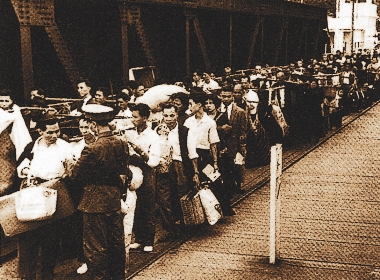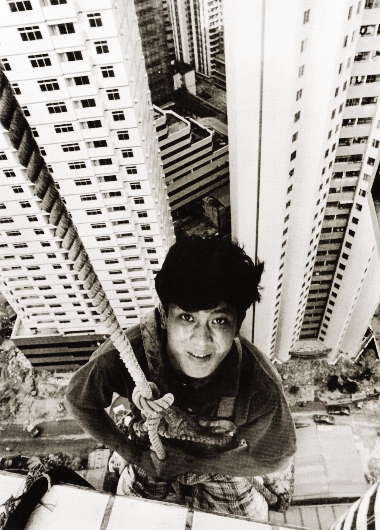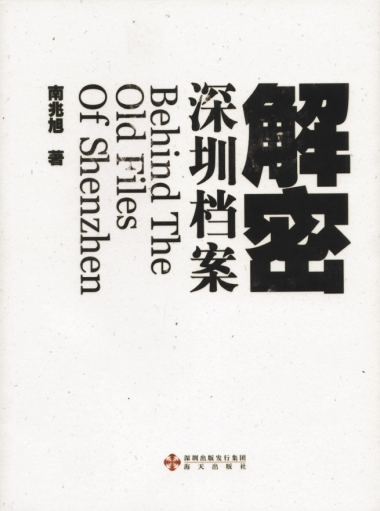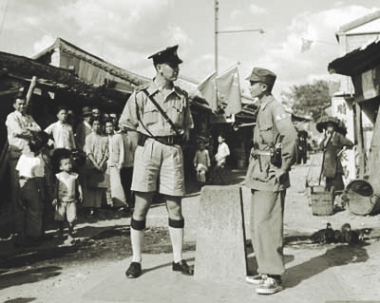





Cao Zhen
AS if being a boomtown, an economic powerhouse and window of China’s reform and opening up is not enough, Shenzhen has added “city with miraculous history” to its titles.
Shenzhen businessman and author Nan Zhaoxu has published a 247-page Chinese-language paperback, “Behind the Old Files of Shenzhen,” which, he says, “discloses historical events in Shenzhen from 1949 to 2009 little known by most Shenzheners.”
The book, which Nan took 10 years researching in local museums and archives, also includes more than 300 rare photos. It follows a book Nan published last year titled “Shenzhen Memories 1949-2009.”
“Most publications related to Shenzhen’s history from the government and experts focus on leaders, while my books pay more attention to ordinary people’s stories,” Nan told the Shenzhen Daily in an exclusive interview.
“The more I pored over the old files, the more I found Shenzheners don’t know about the city. Many untold stories are buried in museums and archives, mostly forgotten by locals. In Shenzhen’s primary and middle schools, there are barely any textbooks on local history which, in my view, is magnificent and distinctive.”
By collecting and photocopying old letters, contracts, maps, postcards, payrolls, and bills, the author details early Shenzhen migrants’ hard lives in his book, illustrated with impressive photos. In the book he comments: “Just as the city was built from barren earth, all migrants started from scratch. The migrants’ power is an indispensable driving force behind Shenzhen’s miraculous achievements.”
“The old files and photos made me excited,” Nan says. “Since 1979, millions of people have come and gone, leaving their best time here, and 14 million have settled. Does anyone think of the fates of these people?”
Like many migrants, the Taiyuan native came to Shenzhen in 1989 with little money, after teaching American and European literature in Shanxi University. An English graduate, he worked as an interpreter in a Honey Lake club for sixth months. After earning 80,000 yuan operating a low-budget hotel in Chiwei Village, he founded his own company in 2007, Yuezhong Cultural Transmission Co., a publishing and documentary production company.
“I have a passion for Shenzhen because it accepted me when I was in plight. I don’t agree with the common saying that Shenzhen has no culture. The city’s attractiveness lies in its dynamic and melting pot nature which was able to accept 14 million people. Shenzhen is like a sponge that absorbs every migrant’s advantages, while offering them opportunities to change their fates,” says Nan.
Unlike other publications which emphasize Shenzhen’s transformation from a fishing village into a hugely successful economic zone, Nan’s books display many untold events before 1979, especially those regarding Shenzhen’s unique proximity to Hong Kong.
“Shenzhen’s earliest predecessor was Xin’an County, which included the modern city of Shenzhen and the territory of Hong Kong before it was later occupied by British colonists,” Nan says.
In “Behind the Old Files of Shenzhen,” ties between Shenzhen and Hong Kong from 1949 to 2009 are reflected, not only in supplying Hong Kong with fresh water and the stowaway trend of the 1960s, but also the peaceful liberation of Shenzhen on Oct. 19, 1949.
According to Nan’s research, the People’s Liberation Army agreed to march to North Shenzhen’s Buji during liberation, and no further southward, on condition that the British Hong Kong government agreed not to use Hong Kong as an anti-China military base. Nan says the Communist Party’s effort to maintain the peace at the Shenzhen-Hong Kong border in 1949 indicated Shenzhen’s potential as a significant city in the mainland’s future relations with Hong Kong.
To inform more Chinese of his research, Nan has turned his books into two TV documentaries. Both have since been broadcast by Shenzhen TV and China Central TV.
Since some historical events after 1979 are still considered controversial, Nan was not able to discuss them in his current books, but hopes that “when time is ripe,” he will include them in a further volume: “The Historical Outline of Shenzheners.”
The author is currently writing “Shenzhen Is Beautiful Because of You,” originally a guidebook to Shenzhen’s coast, mountains, rivers and old villages.
“In the 1960s, there were tigers and leopards in Shenzhen, but now there are only people. I deleted the travel guide part from the book because I wanted the natural scenery in Shenzhen to remain undisturbed. We should cherish Shenzhen as our home.”
Asked whether he has any plans to translate his books into English, Nan smiles: “If no Chinese readers are interested in Shenzhen history, what’s the point of publishing the books in English?”
|

